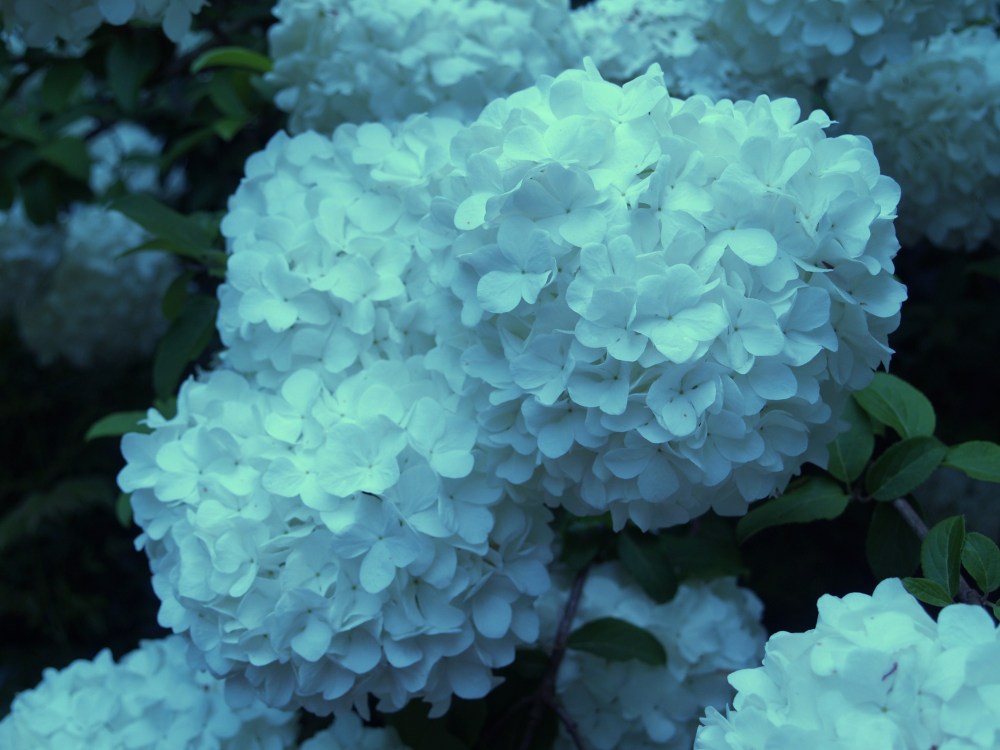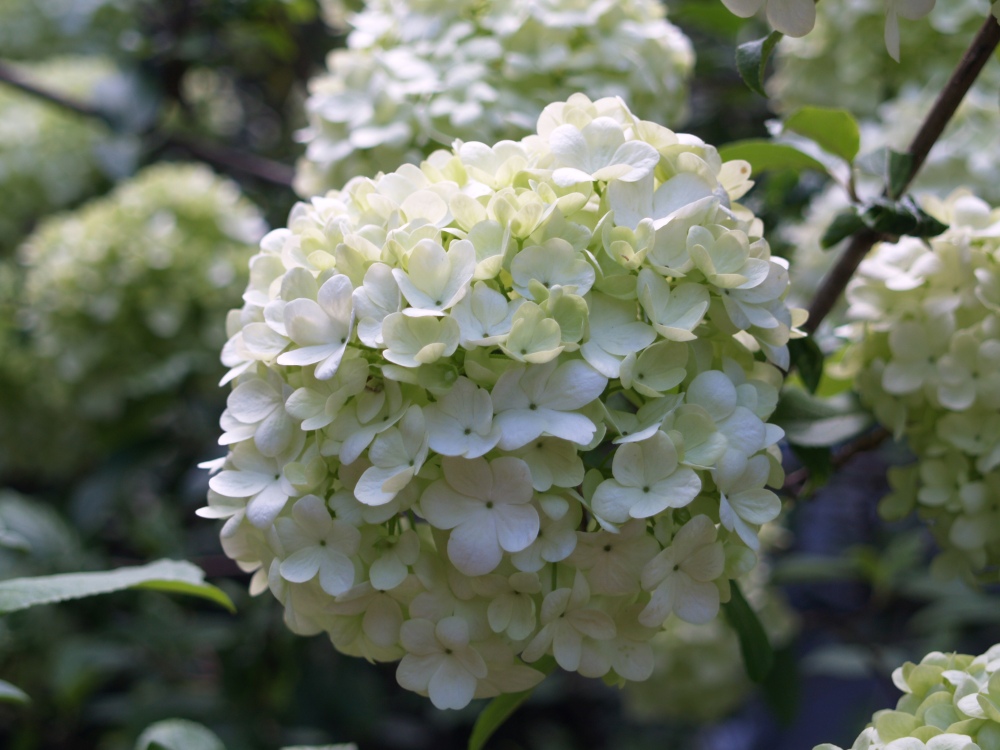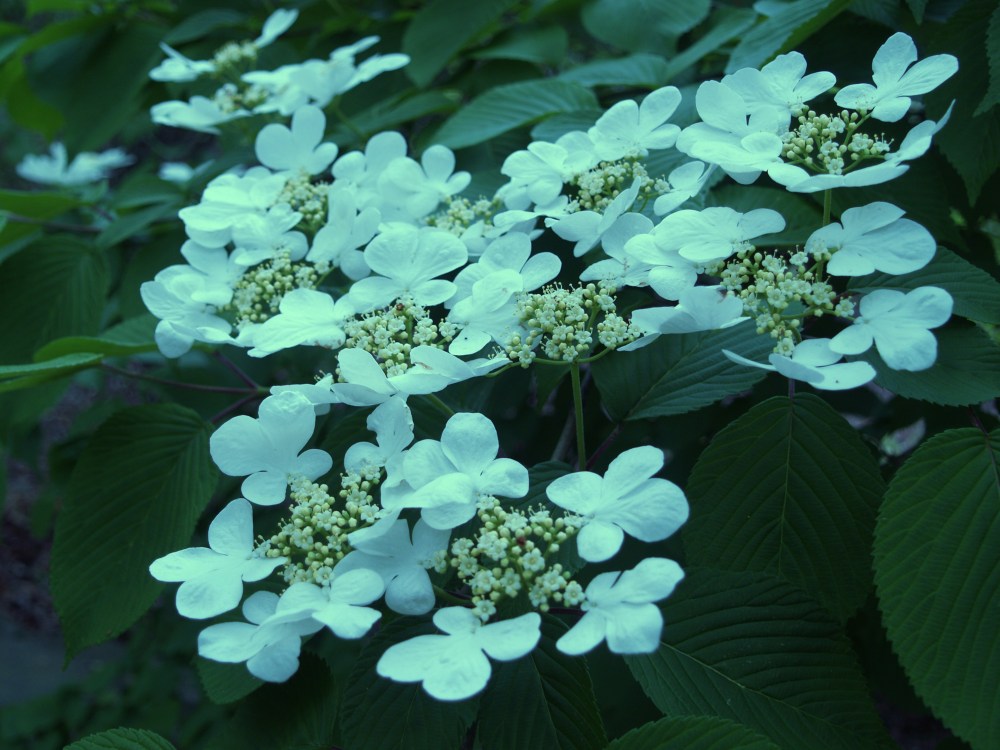There is no larger shrub in the garden, and certainly no larger blooms than on the Chinese Snowball bush (Viburnum macrocephalum ‘Sterile’, below). In fact, the huge blooms are composed of many smaller flowers, much like mophead hydrangeas (Hydrangea macrophylla), but Chinese Snowball is considerably taller and wider than the largest of the mopheads.
This tall, wide shrub has been a problem for me for the past several years. I’ve no quarrel with the viburnum, which is quite wonderful in flower and pleasant enough after bloom, but it’s a considerable nuisance to my wife, and of course the trouble is passed along to me. The bother is that the shrub has grown to block most of the light from our library windows, and annually I’m assigned the task of cutting it down to size.
Each year I promise (with a hedge, as is my usual manner) to prune the viburnum after flowering. It would be much simpler to prune while it’s dormant, but I argue that would cut off the many hundreds of blooms, and that would be such a waste. I should wait until after flowering, but the spring comes and goes and there’s so much to be done, and of course time must be set aside to appreciate the garden, so that the pruning doesn’t happen, again. I figure that much the same will occur this year, and so the library will remain dark. (It has lights, for Heaven’s sake, so I don’t know what all the fuss is about.)
Chinese Snowball does benefit from annual pruning after flowering or it grows with a bit too much of an open form, and though I don’t recall I suppose that I could have done this years earlier when it was a much smaller shrub. Now, it’s far too tall to reach the uppermost branches, so pruning to shape is out of the question, and only with a tall step ladder and an open afternoon would there be any way to cut it back to a reasonable size. As long as my wife doesn’t learn to use the chainsaw I’m safe, the Chinese Snowball will be allowed to roam far and wide, and I’ll take my tongue lashing without complaint.
The garden’s other large viburnum, the doublefile ‘Shasta’ (Viburnum plicatum tomentosum ‘Shasta’, above) takes nearly as much space, though it is not nearly as tall. Fortunately, it’s not blocking any part of the house since it’s planted out into the garden at the forest’s edge. Actually, the forest and a large serviceberry have grown so that ‘Shasta’ is now an understory shrub. In this shaded setting it doesn’t flower as heavily as long ago when it enjoyed at least a half day’s sun, but in early May most of its branches are cloaked in white blooms.
Looking down from the kitchen windows the snow white blooms of ‘Shasta’ are seen peeking out from behind the serviceberry, but walking through the garden you must walk around through the forest, or push aside branches of too many shrubs to get to it. From the stone path twenty feet away, ‘Shasta’ is barely evident, which is shameful design to hide such a beauty, and I’ll take full blame. In a sunny spot the foliage of ‘Shasta’ turns to plum-purple in autumn, but with too much shade under tall swamp maples the color is lost.
Both viburnums require substantial space, and I laugh when I hear people suggest that they will keep a shrub or tree “pruned back”. Perhaps long in the past I fooled myself to think I would dependably keep after pruning something, but it’s just not going to happen, so plan on the space from the start. If there’s room enough for one of these delightful viburnums, the large flowers are certain to please.